I just returned from my most recent workshop to photograph the Palouse Harvest. I had a great group of folks and we enjoyed several days of fantastic conditions which led to some fantastic photographic opportunities. If you’ve never been to the Palouse, you simply cannot believe the vastness of the landscape and the wheat fields that stretch as far as the eye can see.
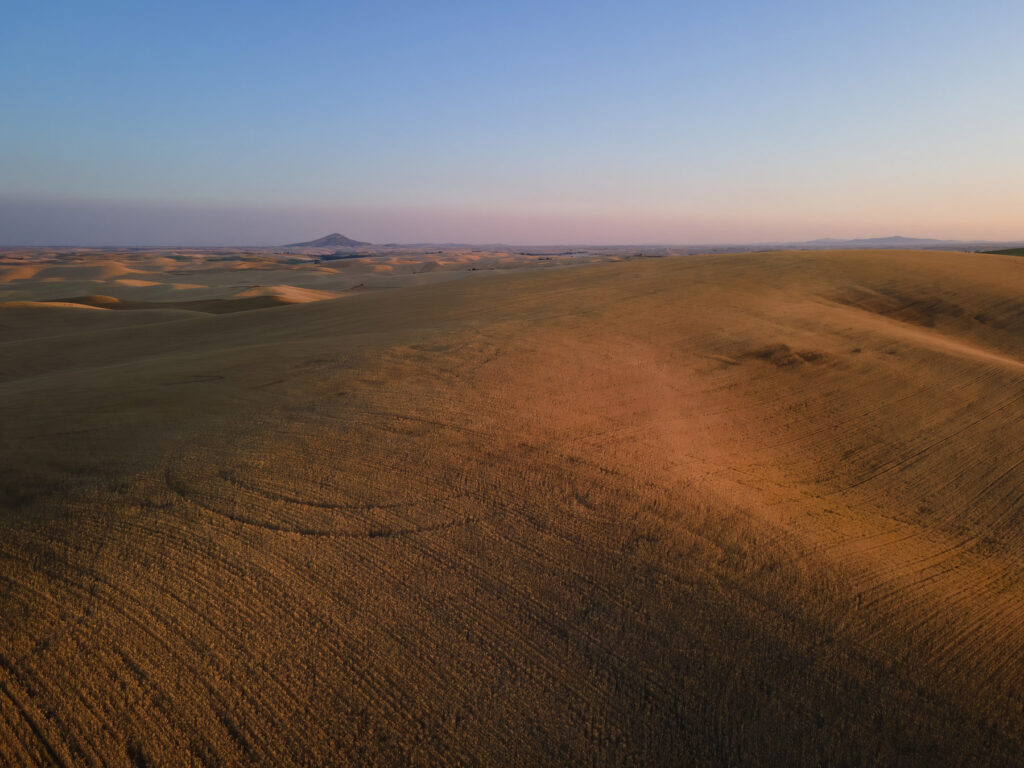

Obvious subject
I’ve often said that photographing in the Palouse is in my top 3 most difficult areas to shoot. Why? Well, because there are very few obvious subjects such as a mountain, waterfall, flower or whatever. To be successful photographically here, I feel that one needs to focus their vision and not look for obvious subjects, but instead look for more subtle cues to build a photograph around. During the harvest time, there are some obvious subjects such as barns, combines, trucks and straw bails, but for the most part, it’s rolling golden fields of wheat and it all comes down to the shape of the landscape and the angle of the light. The Palouse harvest time can be even a bit more challenging artistically because besides the rolling hills, we have to deal with plow lines in our compositions, which can be both challenging and rewarding. The Palouse in spring is challenging, the Palouse harvest takes that up another notch.
Pattern, Shape and Texture
If you’ve ever been around me for any length of time, you have probably heard me talk about “pattern, shape and texture” as key elements to photographs and things to look for when scanning a scene for a possible composition. Nothing is more important during the Palouse harvest than these when working to compose an image. There are patterns, shapes and textures everywhere and as the artist, it is up to us to recognize them and then construct a meaningful composition using them. The rolling wheat fields are nothing but SHAPE and how you position and align the shapes in the composition is crucial.
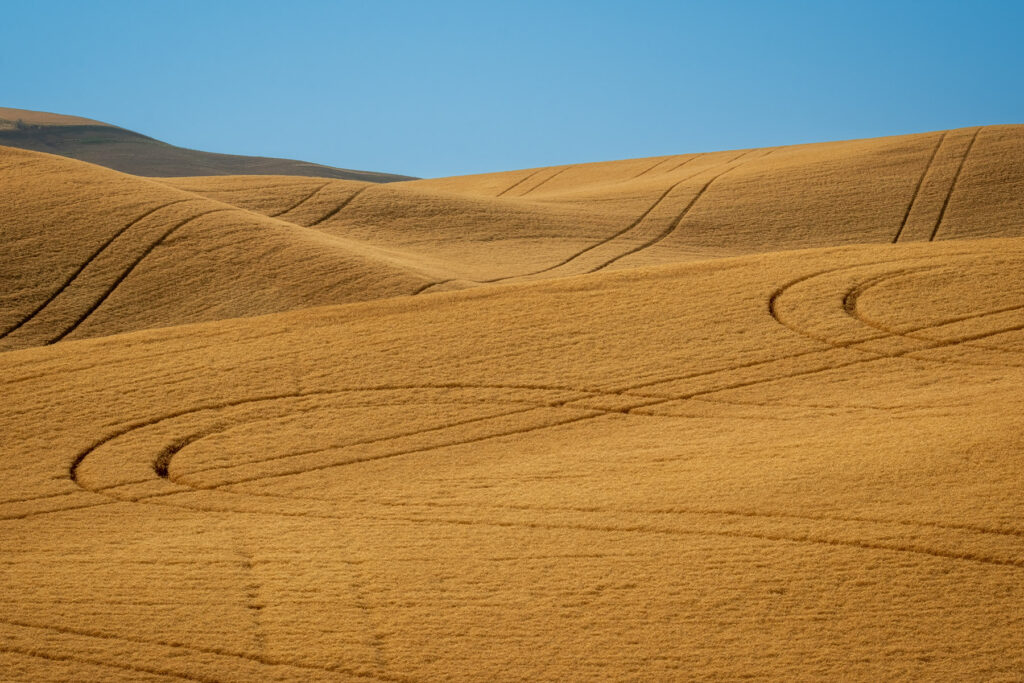
As an easy example, in the above shot, I saw these curving tire tracks and thought I could use them as a compositional element in a photograph. The second consideration for me was the rolling hills and how they “interacted” with the tire tracks…did they accentuate or detract from the main visual interest of the tracks? I decided they didn’t detract or harm the photograph, so it could be a worthy shot to take. The hills provide shapes and the curving tracks also provide shape and where those shapes are positioned in the frame has an influence on the shot. The other notable quality of a shot like this is the patterns, or more specifically, the repeating patterns. We humans subconsciously love repeating patterns and in the shot, the tire tracks display a variety of repeating patterns and even the “layers” of hills are a repeating pattern.
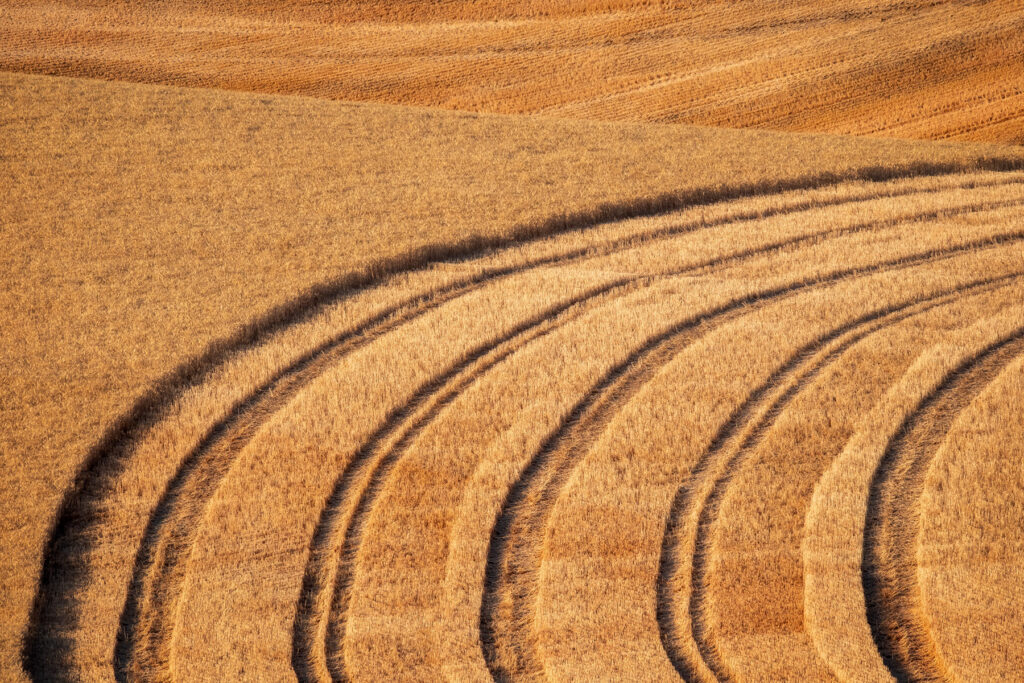
Speaking of repeating patterns, the Palouse harvest offers tons of opportunity to capture repeating patterns caused by the harvesting equipment. In the above shot, it’s all about the curving tire tracks! As the artist, I had to decide how much of the curve to include in the frame, how much space on the right side of frame between the tire track and the edge of the frame and even how much background information to include in the photograph. Sometimes these seemingly simple shots can be the most difficult to execute successfully.

The shape of the landscape, the shape of the hills and how they overlap can often be the whole reason for a photograph. This is one of my sunrise locations and I return here year after year because the hills in the foreground all slope from upper left to lower right and they are stacked one after the other, creating a repeating pattern, so visually, it’s pleasing. The real reason that I come here is that when the sun starts to rise, sunlight kisses the tops of the hills creating an amazing show of light and one that is worthy of a photograph.
Subtlety and Nuance
This year, I expanded my focus for the group beyond pattern, shape and texture and talked more about focusing on subtlety and nuance, honing ones vision to see subtleties in the landscape that could be worthy of a photograph. And with the nuance, it was about slight shifts in perspective, focal lengths, etc to alter the “feeling” of the photograph.
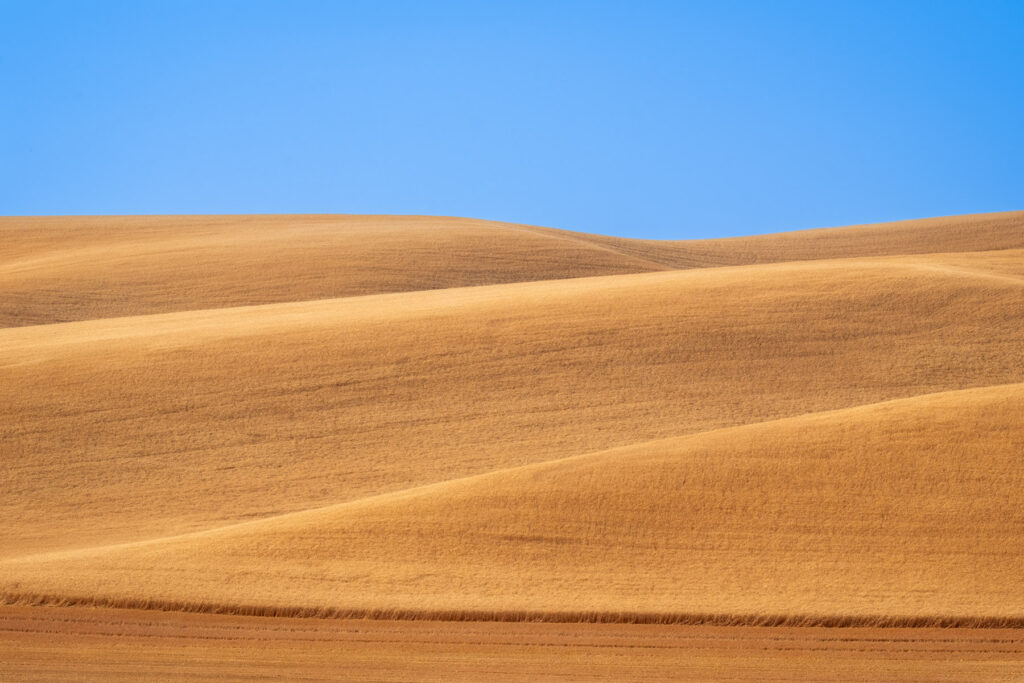
Subtlety and nuance can also occur because of the angle of light and how it plays across the subject. In the above image, it doesn’t “scream” or “shout”, but instead it is a very quiet voice speaking to the viewer. The subtle shading in between the hills along with the highlights on top of the hills creates a sense of depth and layering, which is honestly the whole reason I shot this image. The image has a very simple color palette, essentially just blue and gold, and the magic is happening in the shape of the landscape and the way the light falls across it.
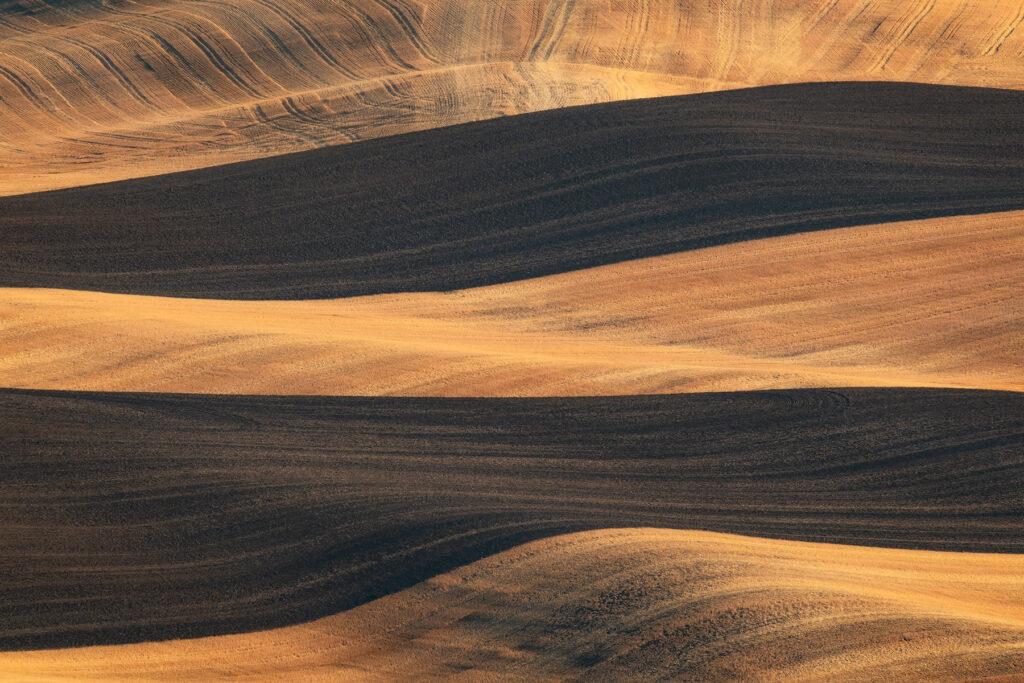
This is one of my favorite shots from the workshop, taken from high on Steptoe Butte with a 100-400mm and 1.4xTC. My goal was to create a graphical image, focused on the alternating gold/brown lines with the subtle shading falling across the landscape thanks to the low angle setting sun.
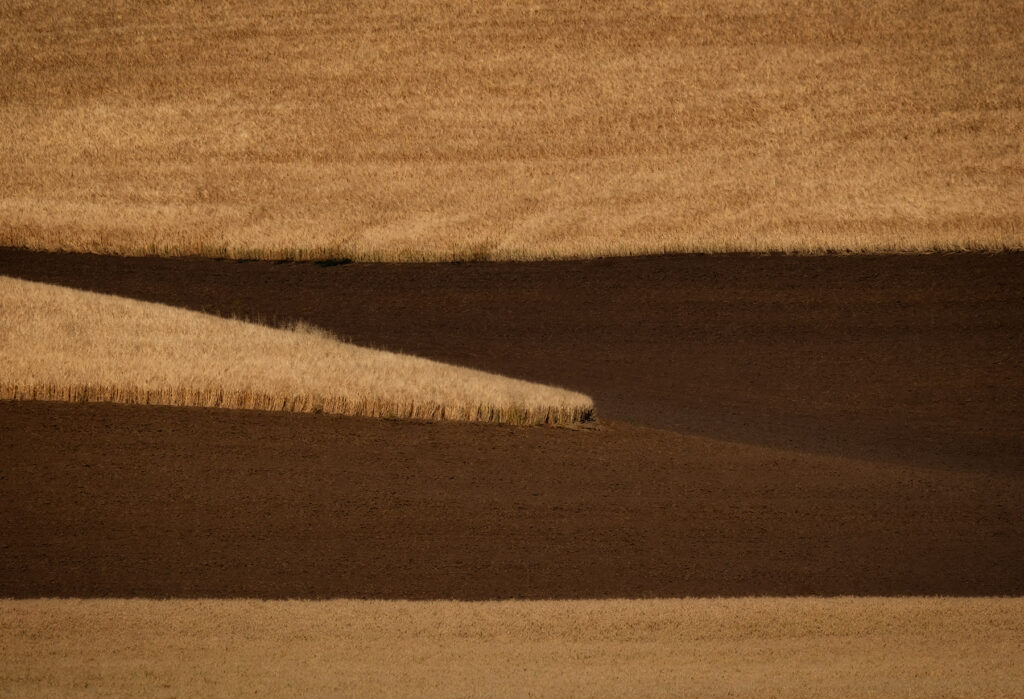
Along those same lines, the above shot is solely a graphical example of using the different colors of wheat and soil to create a composition around the subtle colors and shapes of the landscape. These kinds of shots aren’t everyones cup of tea, but for me, having the vision to “see” these interesting, subtle shapes and then having the skill to compose a shot around them is a source of artistic pride. It makes my inner artist quite happy!
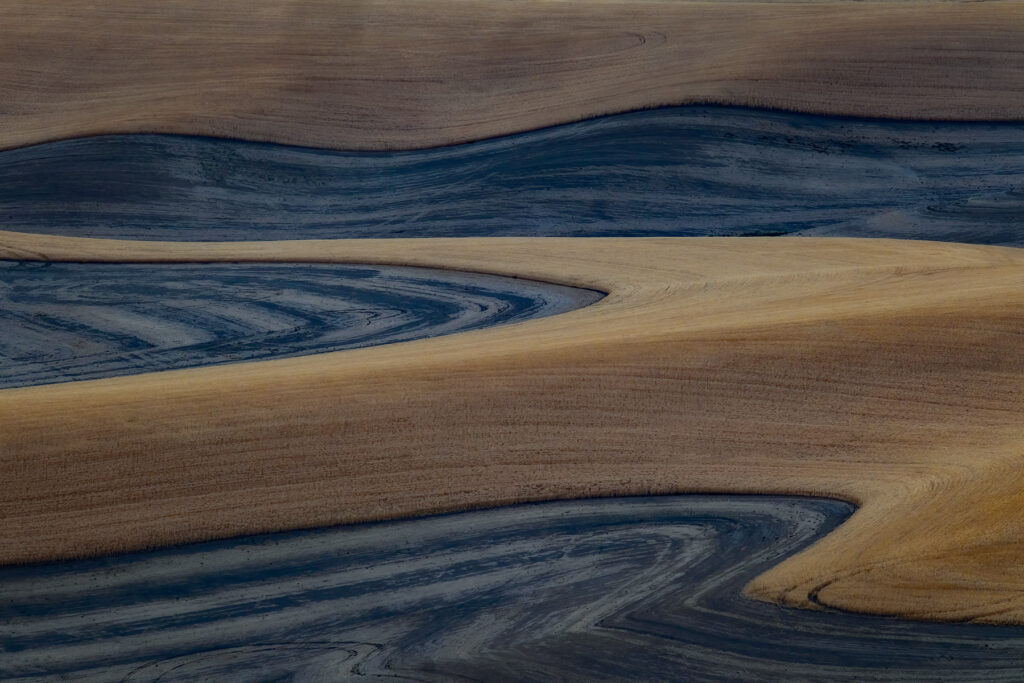
This shot is almost an abstract in how I executed it and it’s all about patterns and shapes! Again shot from Steptoe Butte, this field was partially plowed and thanks to the shape of the landscape, it provides some very interesting lines, patterns and shading. Again, photographs don’t have to scream to get attention, subtlety and nuance can bring amazing visual delight the longer you look at an image.
Storytelling
Visiting the Palouse harvest is as much about the landscape as it is about telling stories of the land, the farming, the small towns and the people. If you are a visual storyteller, this is a must-visit kind of place. This year, I was less focused on storytelling as a theme of my trip and workshop, although I did come away with some shots I’m happy with.
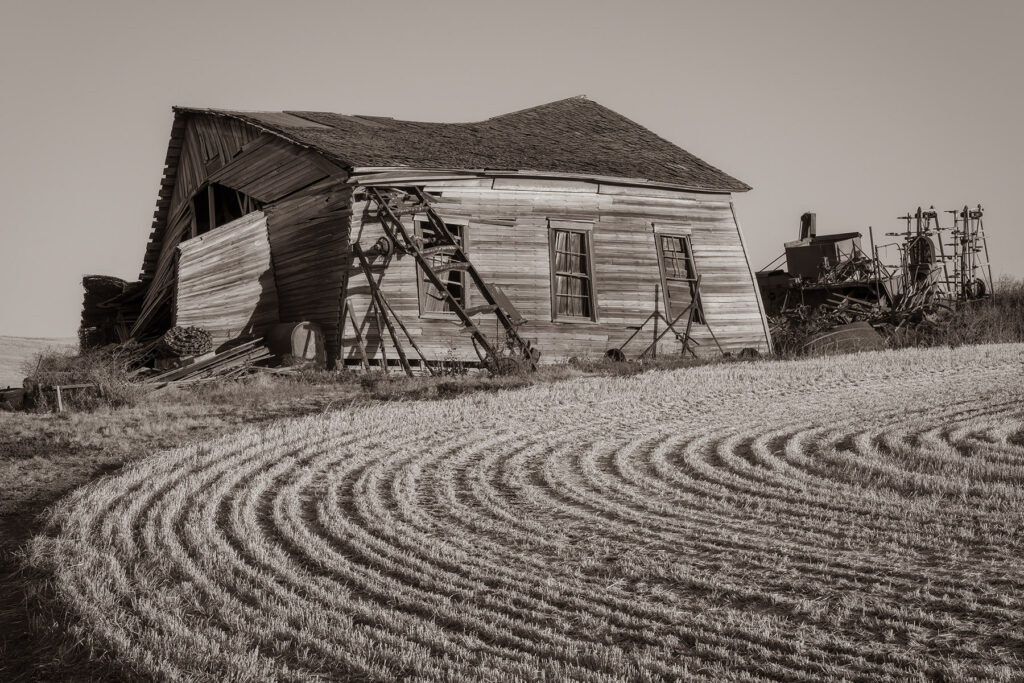
How you capture a scene and how you process the final image can have a lot to do with the “story” and “feeling of a photograph. This is a shot of an old schoolhouse that is falling over. Of course the story is one of decline and “olden days”, so I wanted my processing to reflect that. Having the curving lines of wheat leading up to the house adds a bit of visual interest to the story and subconsciously leads the viewer to the main subject.
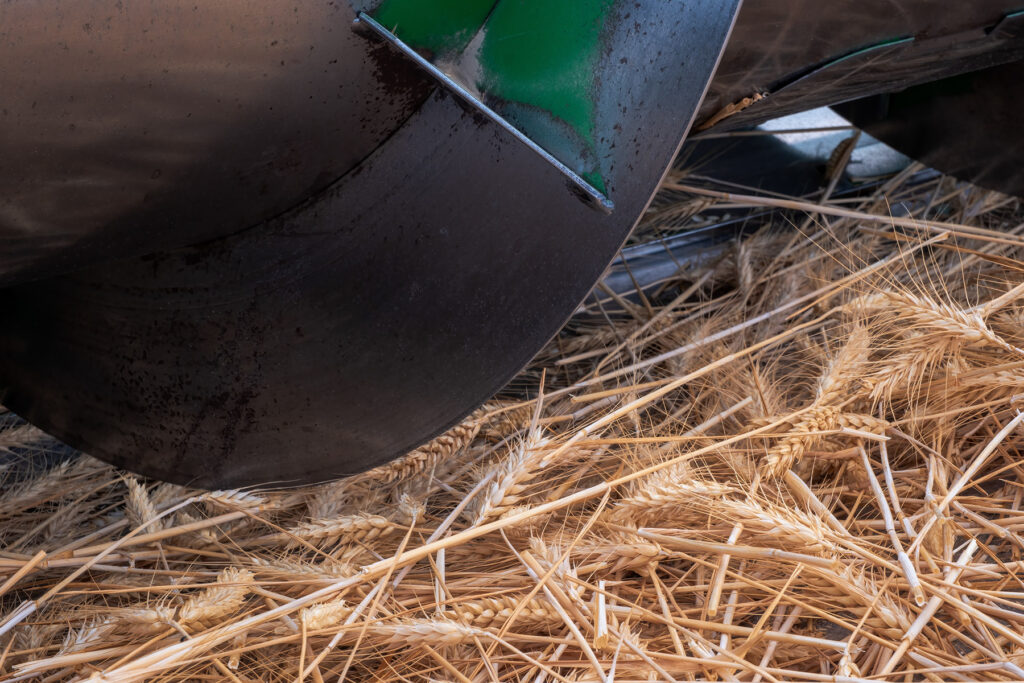
Because I was there for the Palouse harvest, of course I had to take a few shots of the actual harvest. Whether it was combines in action, or a row of combines early in the morning waiting to start their workday, there are tons of farming stories all around. Of course I got my group the typical combine shots in action as it is something people don’t see every day, but also a few of us were afforded a more up close and personal visit with the machinery. Late one evening a few of us went out to “see what we could see” and we came across a combine parked near the road. The farmers had gone home for the night and I felt it was OK if we approached the machine to photograph it. I wanted to try some different storytelling with this combine and focused my attention of the small aspects in and around the machine to convey the concept of harvesting wheat. The above image is one of the shots I came away with. It’s a more subtle and nuanced story than if I shot the entire machine and it’s a shot I hope stands the test of time for me.
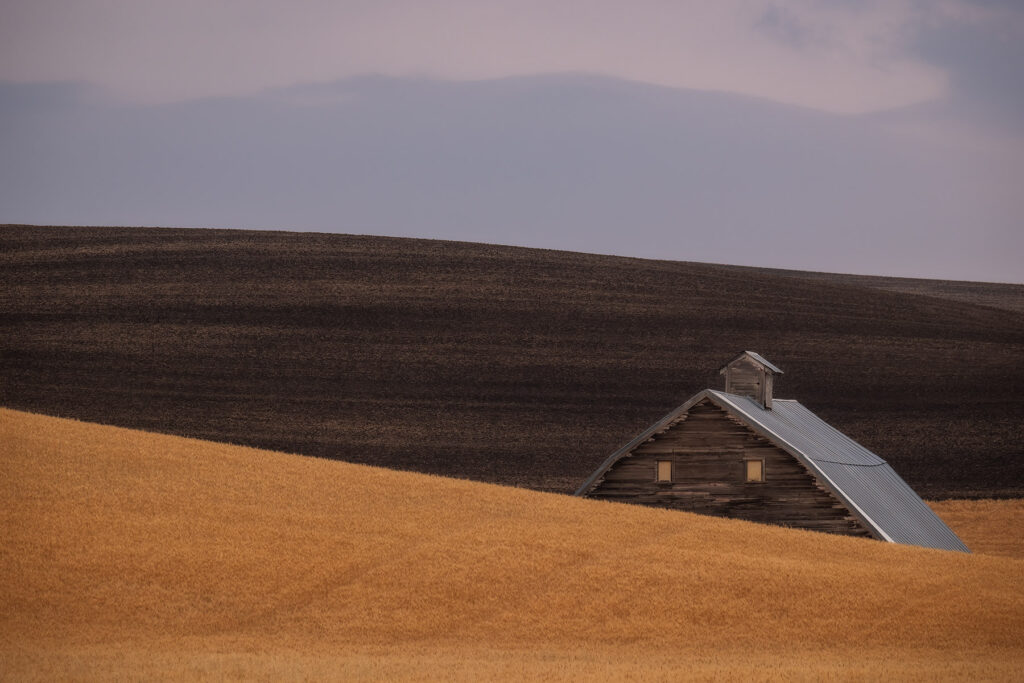
Another version of storytelling during the Palouse harvest can happen when you don’t reveal the entire subject. It lends a sense of mystery and intrigue to the scene and engages the viewer to fill in some of the blanks themselves. In this shot, I positioned myself up the road from the barn to use the foreground hill as a blocker to the rest of the barn so you can’t see the whole thing. This was very intentional! Zooming in with a telephoto lens, I could remove most of the sky and simplify the image down to the core elements of a wheat field, barn, plowed field and sky. I often teach that simple can be strong and in this case, I think it really works.
Visiting the Palouse area any time of year is a joy and if you haven’t been, I highly encourage you to do so. Spring is full of green wheat and lush landscapes, Autumn is all about the golden wheat and harvest time and winter is a stark landscape. Whichever is right for you, you need to go photograph the area. I do have a Spring workshop posted on my site as I’m already looking forward to going back again next year. It is an area that continually challenges me as an artist and visual communicator.
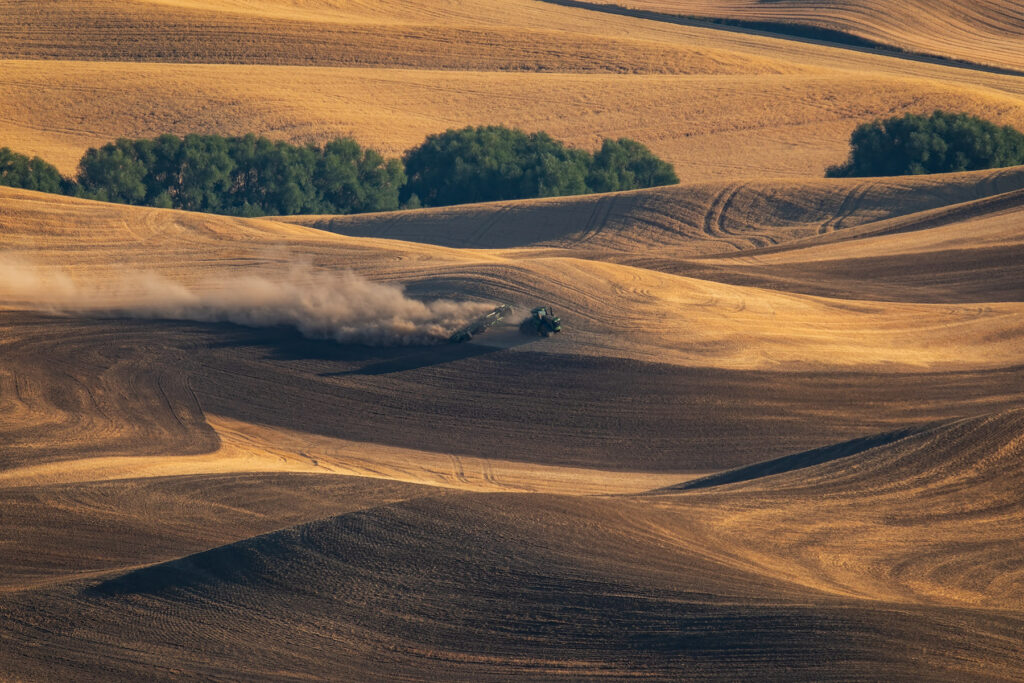


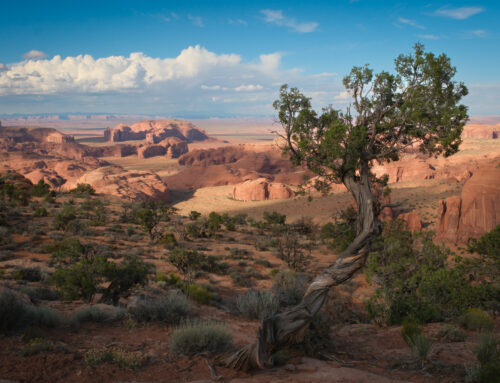
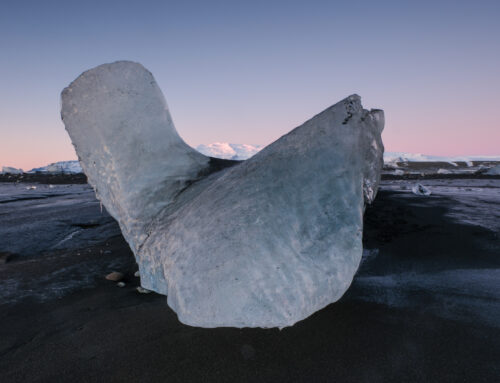
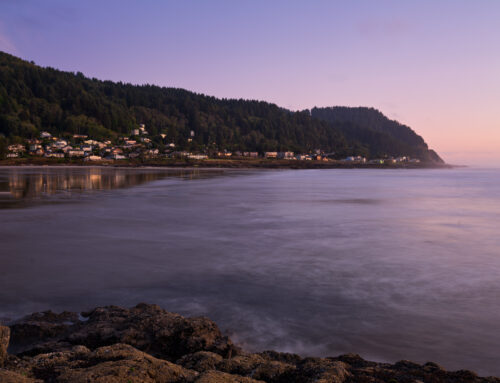
Leave A Comment